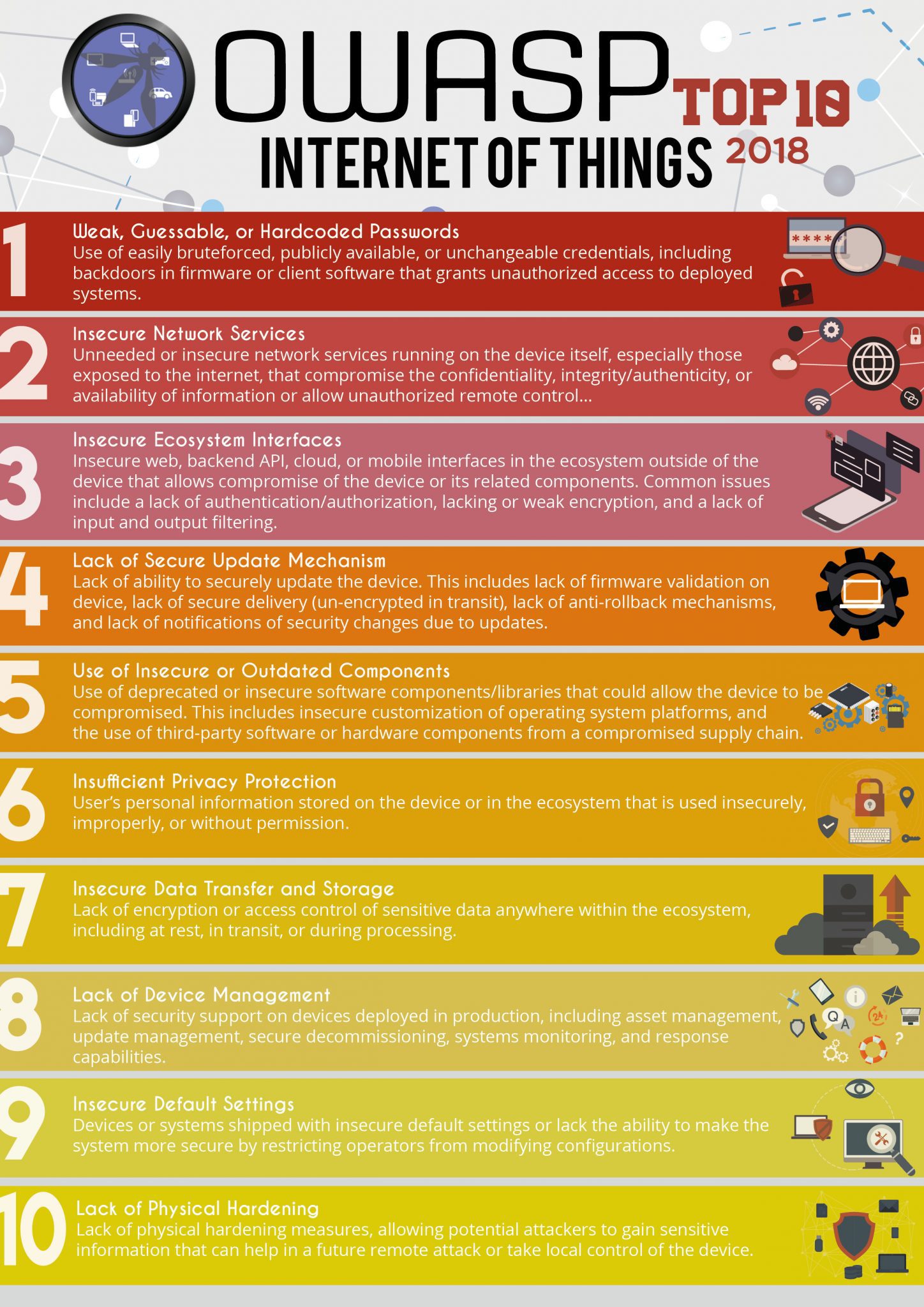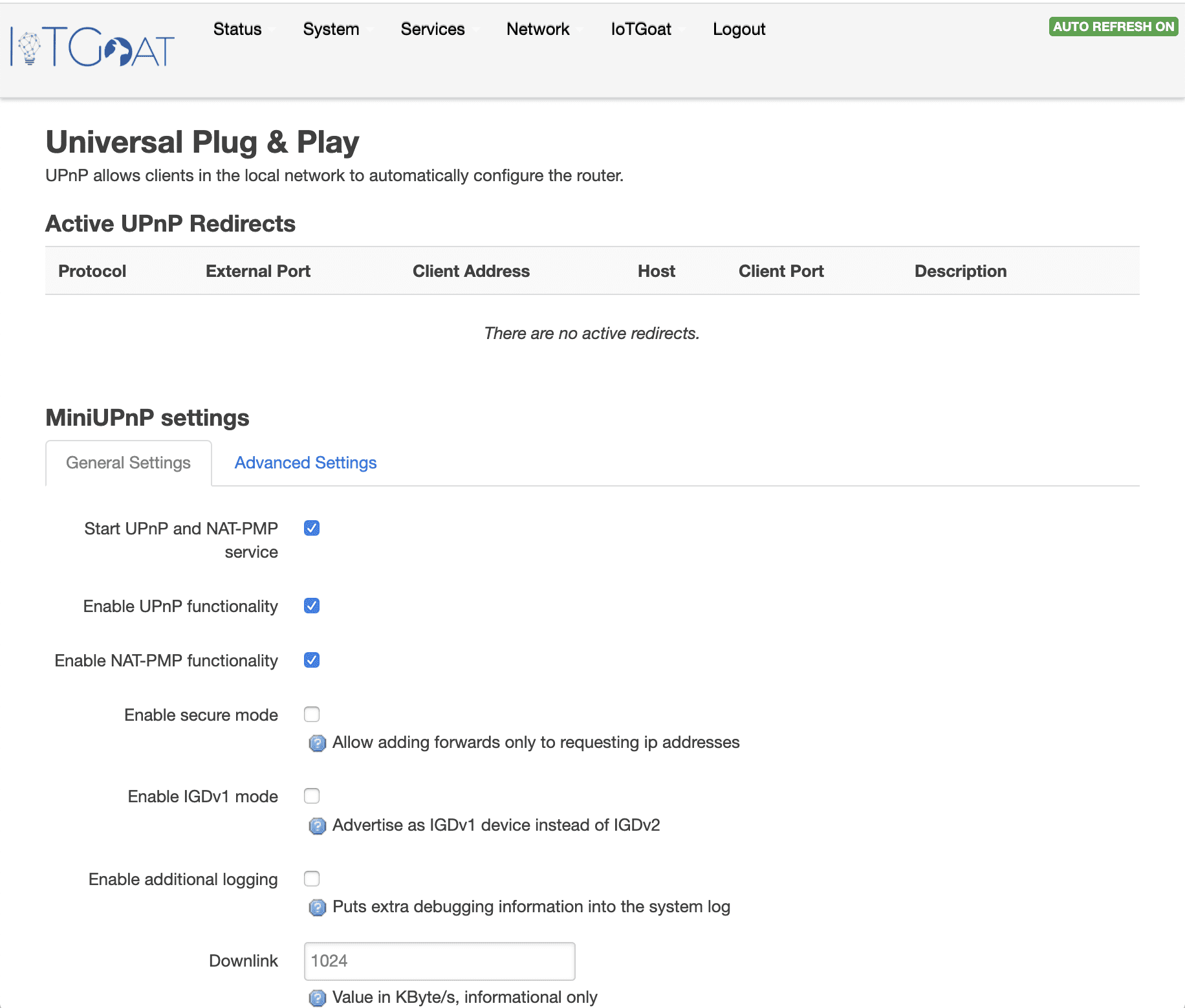
The IoTGoat Project is a deliberately insecure firmware based on OpenWrt. The project’s goal is to teach users about the most common vulnerabilities typically found in IoT devices. The vulnerabilities will be based on the IoT Top 10 as documented by OWASP: https://www.owasp.org/index.php/OWASP_Internet_of_Things_Project.
Challenges
Examples of vulnerabilities included in IoTGoat consist of the following. Boxes checked are included in the latest release.
No 1: Weak, Guessable, or Hardcoded Passwords: Recompile uhttpd and insert a hardcoded backdoor user and password that grants admin rights on the web interface. Add a hardcoded encryption key in a network service that uses encryption.
- Hardcoded user credentials compiled into the firmware.
No 2: Insecure Network Services:
- Vulnerable miniupnp configuration allowing unauthorized devices permission to change firewall rules. This attack can be demonstrated using the Miranda tool
No 3: Insecure Ecosystem Interfaces: Have an unauthenticated SOAP service that can be used to enumerate system users or perform other privileged actions.
- A “secret” developer diagnostics page that is not directly accessible and exposes shell access to users.
- Persistent backdoor daemon configured to run during startup.
No 4: Lack of Secure Update Mechanism: Install a custom service that emulates an insecure vendor update mechanism – perhaps rely on second VM that will have the role of the vendor cloud where updates will be pulled from
 No 5: Use of Insecure or Outdated Components: Find a public CVE associated with one of the components of OpenWrt and install that vulnerable version on our image.
No 5: Use of Insecure or Outdated Components: Find a public CVE associated with one of the components of OpenWrt and install that vulnerable version on our image.
No 6: Insufficient Privacy Protection: Install database locally with cleartext sensitive information (PHI / PII) and expose through a network – associated vulnerabilities could be a SQL or command injection.
No 7: Insecure Data Transfer: Http instead of https, cleartext transmission of PII from the database, telnet.
No 8: Lack of Device Management: configure OpenWrt so that it cannot update packages by default
No 9: Insecure Default Settings: default user for the web interface, make some settings (such as disabling UPnP) not configurable through the web interface
No 10: Lack of Physical Hardening: This will not be probably included in IoT goat due to limiting the project to software only – no hardware component for now.
No 11: Embedded credentials in internal components: Embed credentials of another service (could be one of the existing ones) in a compiled Java application (JAR file). Application could be added to the firmware file so users can find it through firmware analysis or another vulnerability such as a local file inclusion.
No 12: Insecure firmware build system: Develop custom firmware builds of the latest OpenWrt version (18.06) demonstrating the process of incorporating debug services/tools, misconfigurations, and usage of vulnerable software packages.
Copyright (c) 2020 The Open Web Application Security Project